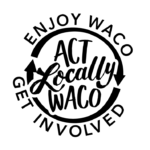By Diego Loredo
For this month’s blog, I decided to touch on something that seems to be a challenge for many students. Making a resume can be confusing and sometimes intimidating. You’re trying to showcase yourself to a future employer, and you have to make sure that your resume is both professional and shows everything that can help you land that job. I made a resume for a PR class last semester and here are a few things that I learned that could be helpful for others.
Your resume should have six main sections: Introduction, Objective, Education, Achievements/Honors, Skills/Talents, and Experience. At the top of your resume should be your contact information, such as your name, phone number, email address, and even your street address. These should be the biggest words you see on your resume. Make sure to keep the font to Arial or Calibri.
For your introduction, you should obviously introduce yourself. But, it is important to also add your major, your school, and what you plan on doing in the future. It also helps to include a sentence or two about any experience you have, but keep that part short since you will go into more detail about it later in the resume.
Your objective should be one to two sentences. It basically states what your goal is. For example, mine says “My goal is to apply what I have learned at UNT and Act Locally Waco into a sports PR career.” Keep it short and sweet.
Next, is your education. This is where you include what college you go to as well as what your major is. Make sure to include when you started attending, and, if you know it, add your anticipated graduation date. You can include your high school although it’s not a big deal if you don’t. Below your education, include your achievements/honors. This is where you show off to your employer. Include any scholarships, awards, or anything else that you think would look good on your resume.
Below that should be your skills/talents. This is the second most important section on your resume. Make sure to add skills that are relevant to the job for which you are applying. For me, since I am a PR major, I included skills like: Social media, Strategic Planning, Blogging, and Microsoft Office Word/Excel/PowerPoint. You should have at least five skills on your resume.
Finally, you add your experience. This is the most important section on your resume. This is where you add your work experience. Add any jobs that you have had, including internships. It is helpful to create a separate section where you add experience relevant to your career choice. I made a separate section called “PR Experience” where I included work that I have done during the school year for Minnie’s Food Pantry in Plano, TX. Make sure to add when you worked for each job and what you did. Include at least two bullet points of information for each job.
All of these tips that for making a resume, I learned last semester at UNT. Before that, I didn’t even know how to make a resume. You may find a better way to build your resume at your own school, if so then great. This is just to get you started. It’s always important to have a resume ready. You never know when you’ll need it!
 Diego Loredo is a sophomore at the University of North Texas. He is majoring in public relations. He graduated from University High School in 2014. Although he is still not quite sure what exactly he wants to do, he thinks he wants to work somewhere in sports PR (preferably soccer or college football). His hobbies include playing soccer and golf. He is 19 years old.
Diego Loredo is a sophomore at the University of North Texas. He is majoring in public relations. He graduated from University High School in 2014. Although he is still not quite sure what exactly he wants to do, he thinks he wants to work somewhere in sports PR (preferably soccer or college football). His hobbies include playing soccer and golf. He is 19 years old.
The Act Locally Waco blog publishes posts with a connection to these Aspirations for Waco. If you are interested in writing for the Act Locally Waco Blog, please email ashleyt@actlocallywaco.org for more information.
By Amanda Walker
Besides the title of “entrepreneur,” CEO, and programmer, Zach Krizan proudly bears the title of “nerd.” Since the age of 10, Zach could be found playing Pokémon, Yu-Gi-Oh!, or Magic: The Gathering at The Game Closet in Waco. It was in that card store that Zach found both a community and an identity as a nerd, and through Nrd Feed he is giving back to that same community.
Zach wanted to bring a little bit of that card shop to players everywhere. To do that he decided to create a website, Nrd Feed. It’s basically a social network for nerds. On the website, nerds can find prime information regarding their favorite “fandoms.” Fandoms are communities for fans of television shows, comic books, video games, etc – some of the most popular include Game of Thrones, Doctor Who, Sherlock, and Harry Potter. Within these fandoms, fans are given a platform to create their own unique culture and clique by sharing information, conversations, and memes (humorous images).
One thing that sets Nrd Feed apart from the competition is the way it generates content. In order to create the best content possible for consumers and fans, Zach wanted experts for each of the different fandoms instead of a few “generalists” writing about several different fandoms. Thus, the infamous “Guru Test” was invented. The Guru Test consists of 25 questions pulled randomly from a bank of 100 potential questions. Would-be fandom experts have 5 minutes to answer all 25 questions and prove their expertise. With a 95% fail rate, The Guru Test separates the true fans from the lightweights. As Zach puts it, he wants those who “live and breathe” their fandom. If a user passes the test with over 90 percent, they are then allowed to write articles and posts on the Nrd Feed website. Nrd Feed has over 40 writers/gurus, a fact that Zach is extremely proud of because it further separates his company from others who have a maximum of ten writers. Zach’s writers are passionate about their topics, actively searching for more information to get out to Nrd Feed followers.
Nrd Feed launched its website in 2014, thanks in large part to Waco’s Chamber of Commerce. In 2013 the Chamber of Commerce partnered with Baylor University to create ThincSpace, an incubator for creative startups. ThincSpace provides companies a place to meet and use as a home-base to allow the companies to grow. During this time, local entrepreneurs pay a very reasonable rent for space and access to professional support and networking.
And a good deal on office space is important, because Zach is an entrepreneur on a budget. “You have to budget like you’ve never budgeted before,” Zach remarks. It’s one of the toughest challenges of being an entrepreneur. Besides the crazy hours and the stress of starting a new company, Zach must also balance a part-time job outside of Nrd Feed in order to pay the bills. Before starting Nrd Feed, Zach quit his previous salaried job as a database administrator in order to work on Nrd Feed full-time. Once Nrd Feed was firmly established, Zach went back to work in order to maintain the funding for his business.
At around 6:30 p.m. Nrd Feed workers start coming into ThincSpace to start their work “day.” All workers come armed with a personal computer and one or two sugary drinks to fight exhaustion. Zach pays his gurus from his own pocket, he is not yet able to pay his seven employees. These students, interns, and nerds with time to spare, all work for free to help Zach achieve his dream. Part of the reason why Zach’s employees are not paid is because the website does not have advertisements. Instead of ads, Zach wants to gain revenue in a way that is worthwhile to his users. One of his business plans is to establish a system on the website that enables users to buy and sell high-quality, fandom-specific items that fans can collect. Not only would Nrd Feed earn revenue, but nerds would also have access to desirable merchandise.
Robert Toups, the Nrd Feed Chief Operating Officer, sometimes comes into the office with only five hours of sleep after pulling a full shift at his job. Working with Zach is nothing new for Robert. Friends since childhood, the two have been both partners in business and partners in prank. Unlike others, who were skeptical about Zach’s Nrd Feed dream, when Zach approached Robert with the idea of creating the website, Robert was completely invested. With an entrepreneur for a father, Robert understood the challenge before them but was confident in his friend. “It sounded like opportunity.” From that point, the two childhood friends never looked back.
Our conversation is interrupted for a moment as Zach greets one of his writers coming in for the night. The writer’s name is James. James has Asperger’s. Yet, as everyone at Nrd Feed brags, he is one of the best and most detail-oriented writers. Here, he is just like everyone else, if not more capable to handle fandom information. Zach not only wants his company to be different from the competition in terms of content, but because of its heart. “That’s one of the things with Nrd Feed. We want to be accepting of everybody. [James] is actually not the only writer with Asperger’s either. Nerds have always had a problem with being pushed away or judged, so we’re trying to be as open as we can.”
Being a self-proclaimed nerd is a point of pride for Zach, and through his website he wants others to feel confident with this label. To him, everyone is a nerd. “Being a nerd is just being open-minded and being passionate about something. There’s nothing wrong with liking something and being publicly open about liking it. You want to be a nerd because those are the best types of people.”
 The entrepreneur…Zach Krizan is former professional card player and full-time entrepreneur. He lives and breathes everything nerdy. Using his experience in the nerd world and his background in software engineering Zach is the founder and developer of NrdFeed.com.
The entrepreneur…Zach Krizan is former professional card player and full-time entrepreneur. He lives and breathes everything nerdy. Using his experience in the nerd world and his background in software engineering Zach is the founder and developer of NrdFeed.com.
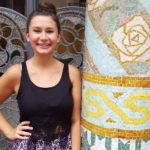 The writer…Amanda Walker graduated from Baylor University with a Professional Writing degree. In her spare time, Amanda enjoys reading romance novels and binge-watching political comedies.
The writer…Amanda Walker graduated from Baylor University with a Professional Writing degree. In her spare time, Amanda enjoys reading romance novels and binge-watching political comedies.
The Act Locally Waco blog publishes posts with a connection to these aspirations for Waco. If you are interested in writing for the Act Locally Waco Blog, please email ashleyt@actlocallywaco.org for more information.
by Jasmine Wise
Last Thursday I was invited to a Pilates class at the Baylor Stadium by one of my dear friends in Waco. Neither she nor I had any idea what to expect. Even as we pulled up I questioned her on things like, shoes or no shoes; does it cost or not; where exactly is the class? She knew none of those answers. The whole thing was a surprise to us both. We walked up the hill toward the Robert Griffin III statue and saw people preparing themselves for the class by placing mats on the ground and directing their children about what to do while they were working out. The instructor was introducing himself.
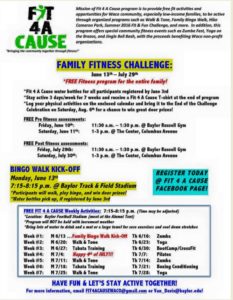 At first, I was so excited for this free exercise class and to stretch out my body that I didn’t notice much about the other people stretching out around me. I soon realized something was different about this class. This was not an ordinary free workout for those associated with Baylor. This was a Waco community workout. The workout students were a diverse group of people. I do not mean in exercise level. (But there were some people doing level three the entire time, and it wasn’t me). I mean in class, race, and gender. I saw people from all ends of the spectrum. I do not want to speculate what those people did for a living nor their education level, but let’s say we represented Waco. You had my friend and I both childless African American Baylor graduates and the middle-aged Hispanic women next to me with her three children.
At first, I was so excited for this free exercise class and to stretch out my body that I didn’t notice much about the other people stretching out around me. I soon realized something was different about this class. This was not an ordinary free workout for those associated with Baylor. This was a Waco community workout. The workout students were a diverse group of people. I do not mean in exercise level. (But there were some people doing level three the entire time, and it wasn’t me). I mean in class, race, and gender. I saw people from all ends of the spectrum. I do not want to speculate what those people did for a living nor their education level, but let’s say we represented Waco. You had my friend and I both childless African American Baylor graduates and the middle-aged Hispanic women next to me with her three children.
I took particular interest in two women. The first was a middle-aged white woman with two middle school-aged children. Honestly, the reason I took interest was negative. Both of the children were right in front of my friend and their mats kept blowing towards her. I was confused as to why neither the woman nor her kids tried to stop them. The mat blowing towards my friend thing happened a few times. I must admit, at first I was frustrated. I take exercise seriously! This seemingly unnecessary distraction was messing with my workout!
God quickly quieted my spirit and reminded me that this is the Church. This is what the community I say I want to be a part of looks like. There are Hispanics mothers, black men, Baylor students and graduates, all sharing the same space. I quickly got over my frustration, changed my attitude, and continued exercising.
The second women I took interest in was a black woman in her late 50s or early 60s. She sat elevated in the back of class. She was not on the ground for apparent health reasons and could not complete all of the exercises. Her determination to move and get healthy inspired me. She never quit moving, and I saw focus on her face as she completed each exercise. She gave me some new perspective on health. She showed me that every little bit helps. My only regret from this day is not talking to her. I should have asked her about her life, what brought her out on that day, what her family is like? I let this moment pass by.
When you are a part of something great you do not always realize until you take a step back.
I reflected on the experience the next day. I gained more appreciation for the town I live in. I loved Waco before. I love it a little bit more each time I interact with its people. This day was no different. This one event showered me with lessons. I realized how important it is to model healthy behaviors for the next generation as mothers exercised in front of and with their children. I saw diverse groups coming together with a common goal and nothing negative happened…something that felt like a contrast to what is happening in our country right now. I saw how important it is to take opportunities for conversation when they arise. These conversations create bridges across lines that usually divide us. This community workout is ripe with men and women from different backgrounds. Imagine what I could have gained from talking to that older lady for five minutes.
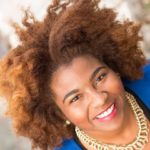 By day, Jasmine Wise is a graduate student in the department of Sociology at Baylor University working on her Ph.D in Applied Sociology. By night, she is a youth leader at Acts Church in Waco, TX. By weekend, she develops her passions for public speaking, growing churches, developing communities. She wrote her first book, “Confessions of a Sinner”, in the Summer 2015. If you want to get in contact with Jasmine, please visit her website: drjkaw.com.
By day, Jasmine Wise is a graduate student in the department of Sociology at Baylor University working on her Ph.D in Applied Sociology. By night, she is a youth leader at Acts Church in Waco, TX. By weekend, she develops her passions for public speaking, growing churches, developing communities. She wrote her first book, “Confessions of a Sinner”, in the Summer 2015. If you want to get in contact with Jasmine, please visit her website: drjkaw.com.
The Act Locally Waco blog publishes posts with a connection to these aspirations for Waco. If you are interested in writing for the Act Locally Waco Blog, please email ashleyt@actlocallywaco.org for more information.
By Dr. Peaches Henry
We are broken-hearted about the attacks on the Dallas Police and DART Officers. We are broken-hearted about the deaths at the hands of police of Alton Sterling and Philando Castile. As John Donne wrote, the death of any man diminishes us all.
The Waco NAACP has a good relationship with the Waco Police Department. The relationship between the Waco NAACP and the Waco Police Department did not begin with the latest tragedies in our country. Rather, it started over a year ago with retiring Chief Brent Stroman. Well before the violence of last week, Acting Chief Gentsch reached out to the Waco NAACP to continue that relationship. I want to publicly thank retiring Chief Stroman and Acting Chief Gentsch for their commitment. I am proud that the Waco NAACP and the Waco Police Department have partnered to be proactive rather than reactive.
The Waco NAACP supports law enforcement. And though I do not presume to speak for all African Americans, I am confident in stating that the African-American community supports all law enforcement officers who are working to protect and serve all communities. Neither the Waco NAACP nor the Black Lives Matter Movement is demonizing the police. We know that the majority of law enforcement officers are committed to protecting all members of the community. We do not teach our children to hate the police. Yet, it is possible to simultaneously support law enforcement and criticize them. We cannot continue to pretend that law enforcement officers are blameless when they use unwarranted lethal force against African Americans.
Just as we cannot paint all police officers with a broad brush for the actions of a few, we cannot do that to the Black Lives Matter Movement. Thus, even as I support law enforcement, I want to stand with the Black Lives Matter Movement. We cannot allow these young people to be vilified because of the actions of agitators who are not affiliated with the movement. Nor should the acts of an apparently mentally-ill veteran be used to silence these young activists. When they marched to criticize a flawed criminal justice system and bad actors, these young people were exercising their constitutional rights. By disrupting society and inconveniencing us, they have forced a national conversation on much needed criminal justice reform. That is a good thing. Have their tactics been blameless? No. Have they sometimes used over-the-top rhetoric? Yes. Paraphrasing Martin Luther King, protests are the voice of the unheard. Rather than allow their voices to be shut down by making false links between their righteous cause to end unjust violence against African-American lives and the killing of innocent law enforcement officers in Dallas, we need to hear Black Lives Matter.
You ask why protestors do not flood the streets when so-called Black-on-Black violence occurs. Black-on-Black crime is a blight on society. So is White-on-White crime. I do not condone crime period. However, criminals, whether they are White or Black, are just that—criminals. Unlike criminals, law enforcement officers have been sworn to serve and protect the community and its citizens. They have been licensed to use deadly force to do so. Thus, when police officers break that sacred trust by unjustly directing that deadly force at African Americans, citizens are rightly outraged. Thus, instead of demonizing law enforcement or Black Lives Matter, there needs to be a conversation about criminal justice reform in this country.
In the videos that are confronting us on a devastatingly regular basis now, the larger American society is witnessing what African Americans have experienced for years. All America must acknowledge the truth that we see in many of these videos: African Americans face biased and racist treatment from some law enforcement officers that sometimes leads to their unwarranted deaths. No one is suggesting that law enforcement does not face extremely difficult and dangerous circumstances. We watched as they ran toward the shots last week. We have heard the stories of how they protected the very people who were protesting. However, the protestors were not criticizing those brave, committed public servants. They were condemning those officers who have broken trust with communities they serve and created a bad situation for good, decent officers like those. While the majority of law enforcement officers are committed to protecting all lives, just as those officers who ran to protect the lives of the protestors in Dallas did, African Americans do not know which officer they will face in a “routine” traffic stop—the public servant or the menace to society.
It must be noted that Philando Castile had been stopped 52 times since 2002. Was Castile an especially bad driver? Or was he targeted by officers who single out African-American motorists for such stops? It is these uncertainties that force African-American parents to have “the talk” with our children—a talk to help them survive an encounter with the police. Yesterday I was saddened to learn from Ramona Curtis, director for Community Engagement and Initiatives at Baylor, that she had been forced to have the talk with her young grandson. Her words show the heart-breaking reality that I and other African-American parents have to confront:
“Well, we had the talk! Today at Ross I promised my grandson a toy. He saw a beautiful water gun. Yes, Tamir Rice popped into my head. I know the gun is green, red, and yellow. I want to believe that nobody would mistake it for a real gun. But this is my grandson! I am not about to be a potential contributor to him being a hashtag! Do I take this chance? Hurry, find another toy that would knock his socks off. Grammy does not want to disappoint, nor does she want to have the “you are a Black man” talk that she had over and over with his dad growing up. My heart dropped as I recalled young Tamir Rice. Oh Jesus, he is eight! Not today! I don’t want to have the talk today! So I explained to him that sometimes people mistake toy guns as real ones. I could not stop there. My grandson is wise beyond his years, he asked me what color was Mr. Rice’s gun. He said to me that no one would mistake a green, red, and yellow gun for a real one. Maybe. Just the same, I had the “Black man in America” talk with him.”
It is hard to have “the talk.” However, it is even harder and more frustrating to see so few officers facing consequences for unwarranted violent acts against African-Americans. Tamir Rice was a child with a toy gun who was killed by police within seconds of arriving; officers faced no charges. Freddy Gray did not break his own neck in the back of that police van, yet no officer so far has been held accountable. John Crawford was strolling around Walmart with a BB gun; police shot and killed him instantly. Again, no charges resulted for law enforcement. Michael Brown, an unarmed jay-walking teenager who was not a suspect at the time, was shot and left to lie in the street for four hours—no indictment. Officers using deadly force when it is not warranted must be punished.
The NAACP and Black Lives Matter demand criminal justice reform. First, there must be a willingness of law enforcement to admit that there are bad officers among them and to punish them to the extent of the law. Second, law enforcement must shift from militaristic policing of African-American neighborhoods to community policing where officers development relationship with citizens so that they begin to see African Americans as citizens not as criminals. Acting Chief Gentsch served as an officer in East Waco for years, and consequently, knows many citizens in that neighborhood. Third, local communities need to have civilian review boards with subpoena power to provide needed oversight of police misbehavior. Fourth, local jurisdictions must acquire body cameras to provide additional insight into encounters between officers and citizens. Fifth, Congress needs to pass a federal anti-profiling law that includes data collection so that bias can be determined or dismissed in local jurisdictions.
If we want this cycle of violence to stop, together we must acknowledge the truth and take action on criminal justice reform.
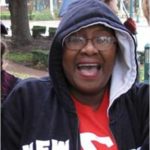 Dr. Peaches Henry is a graduate of the University of Texas. She received both her master’s and doctorate in English from Columbia University in New York. She is an English Professor at McLennan County Community College. She is the current president of the Waco McLennan County branch of the NAACP.
Dr. Peaches Henry is a graduate of the University of Texas. She received both her master’s and doctorate in English from Columbia University in New York. She is an English Professor at McLennan County Community College. She is the current president of the Waco McLennan County branch of the NAACP.
The Act Locally Waco blog publishes posts with a connection to these aspirations for Waco. If you are interested in writing for the Act Locally Waco Blog, please email ashleyt@actlocallywaco.org for more
By Robert Callahan
I don’t talk seriously about race much because our culture is burned out on it. Somehow we’ve departed from “I have a dream” to “I don’t wanna’ hear it”. So I’m judicious in my discussions of race. I use it sparingly so that when I do, it will count. Now I feel compelled to.
I grew up in a time & place where it was not socially acceptable to be black. If you wanted to see a movie with a black actor, you drove 45 minutes away to the St. Vincent Mall b/c that was the “Black” mall. Pierre Bossier Mall was the “White” mall & only played “white” movies.
Teachers spoke down to me. Students used the N word in front of other students & teachers with impunity. One sweltering Louisiana summer day, I waited outside a friend’s house, drinking from a hose while all my other friends took turns using the bathroom and getting water inside because my friend’s daddy didn’t want N*****s sitting on his toilet. When I was about eight, I recall running out of a restaurant screaming I didn’t want to be Black because my little heart couldn’t take it anymore. It was hell.
Regardless, I was a military brat, so as we moved I learned to adapt. Evolve. Adjust. Blend in. By the time I went to college in the North, I thought racism wouldn’t follow me.
I discovered I was wrong every time I drove through Idaho. One night, Rick Steadman, and others were with me as we left a carnival and I was “asked” to step out of a car by four officers at gun point because I fit the vague description of an escaped convict: black. No lie. I thought I was going to die that night. We all drove home silent. In tears.
Now I am married to a beautiful, white woman. We have beautiful children. When we married, I had to turn my back on my family that didn’t support our interracial marriage because I clung to the hem of my belief in God’s sovereignty more than the opinions of man.
We teach our children the values of truth, righteousness, and justice in a fallen world. One day we will teach them not to frequent certain places at certain times of night. Likewise, we’ll teach them how to interact with law enforcement officers during a traffic stop. That’s our reality.
Even still, what happened in our nation this week was a travesty. We began with a glimmer of hope that we could begin talking about race intelligently. That hope was lost when anger and ignorance took down our protectors.
Anger. Fear. Division. We scoffed in the ’90’s when black artists & leaders warned that the portrayal of African-Americans as “thugs” or “silly” in entertainment media was dangerous. Yet, the Bible tells us that faith comes by hearing. The seeds of division have been planted and matured to fruition. Now we are reaping a harvest grown from the casual glorification of thug culture and the honest fear of onlookers who think that’s really who we are.
Now, it seems that we’re all separated across a racial chasm as deep as our nation’s sordid history on race relations. Reading the Facebook posts of so many, It would seem as though I have to pick a side: “Are you for Police Officers or Black People?” It’s that simple. Just like that, racism is En Vogue again.
The pendulum has swung back to the place where those ignorant brats I grew up with have become community leaders, and have an excuse to openly use the N word with impunity again. I’m afraid of where we are as a nation.
There is a conversation to be had here. One that requires honesty and vulnerability. It means shutting up and TRYING to hear what the other person is trying to say. People are hurting. LISTEN!
We don’t have to be exclusively, blindly, pro-law enforcement or pro-minority to regain our conscience, our moral compass, or our identity as a nation. I refuse to participate in this debate between whose life does and doesn’t matter which is fueled by our outrage, ignorance, biases, and prejudices.
Treat people the way you want to be treated. If you call yourself a Christian, read your Bible. See what God has to say about the poor, the widow, the orphan, and the oppressed. Ask how what’s actually coming out of the politician’s mouth squares with what the Bible says about those topics. Don’t rush to judgment until you have all the facts. These are the basics. No one should have to remind us of these fundamental lessons in humanity. Even still, lest we forget:
“We hold these truths to be self-evident, that all men are created equal, that they are endowed by their Creator with certain unalienable Rights, that among these are Life, Liberty and the pursuit of Happiness…”
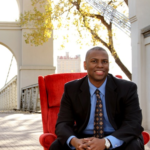 Robert Callahan is a name partner in the firm of Callahan & King, based in Waco, Texas. He is a graduate of Baylor Law School, who previously served in the McLennan County District Attorney’s Office under John Segrest. As a prosecutor, Robert was an advocate for women and children. In 2016, he was inducted into the National Black Lawyers Top 100 membership. Robert and his wife, Mollie, have been married more than ten years and have three children. They are actively involved in Antioch Community Church where Robert provides voluntary legal support and training for Unbound, a ministry that supports victims of Human Trafficking.
Robert Callahan is a name partner in the firm of Callahan & King, based in Waco, Texas. He is a graduate of Baylor Law School, who previously served in the McLennan County District Attorney’s Office under John Segrest. As a prosecutor, Robert was an advocate for women and children. In 2016, he was inducted into the National Black Lawyers Top 100 membership. Robert and his wife, Mollie, have been married more than ten years and have three children. They are actively involved in Antioch Community Church where Robert provides voluntary legal support and training for Unbound, a ministry that supports victims of Human Trafficking.
The Act Locally Waco blog publishes posts with a connection to these aspirations for Waco. If you are interested in writing for the Act Locally Waco Blog, please email ashleyt@actlocallywaco.org for more
By Jenuine Poetess
In 2015 Central Texas Artist Collective (CTAC) brought the community together with an exhibit centered around Birds imagery and themes. Over 45 artists across diverse mediums entered, some for the first time ever. This year, CTAC is once again bringing a fresh, dynamic, and collaborative art exhibit to Waco. Ekphrasis! is a creative adventure pairing visual artists and writers together—selected at random to collaborate—creating art and poetry to be displayed in shop windows along Austin Avenue in Downtown Waco.
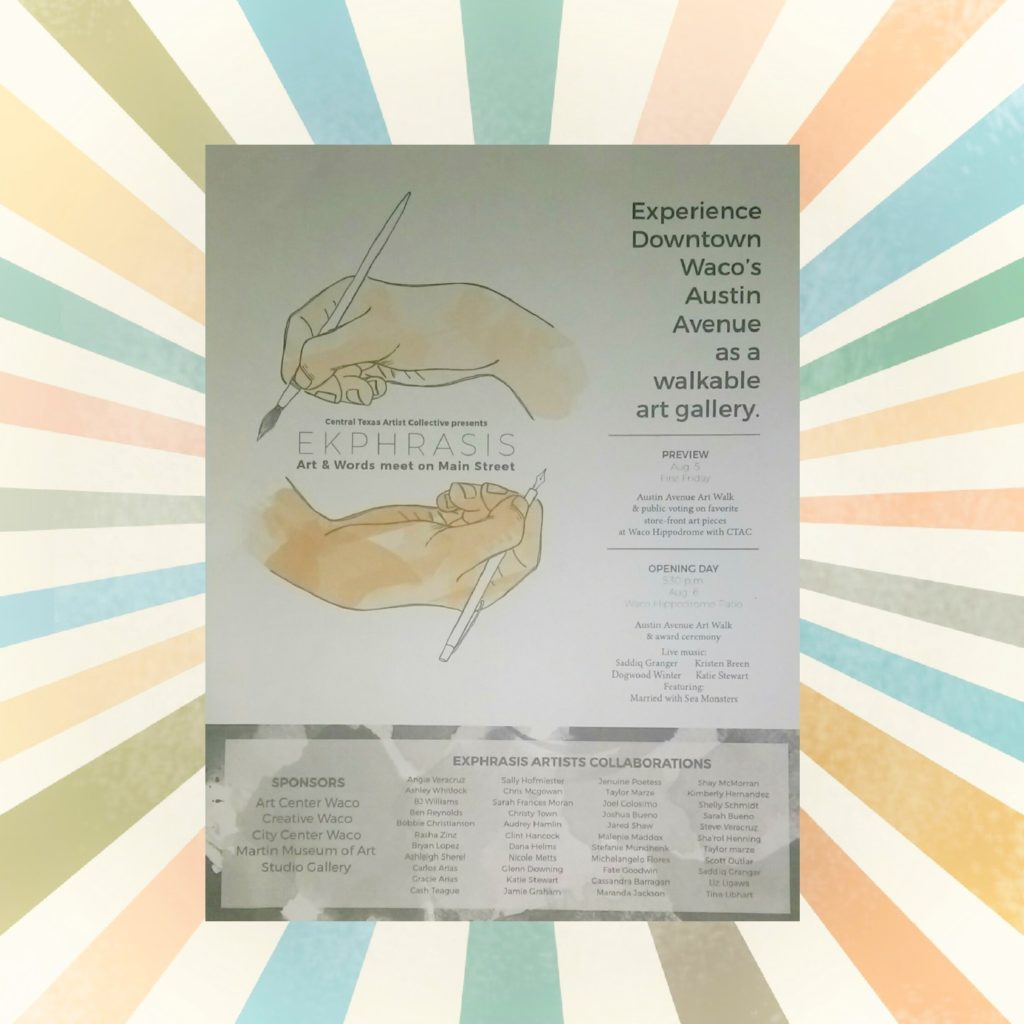 Not only are over 50 artists and writers involved in this thrilling project, but over 15 businesses will host artwork and their accompanying poems for the first two weeks of August. On First Friday, community will have a chance to tour the exhibit and place their votes for Best in Show; Most Inspiring; and Waco/Downtown Spirit awards. On Saturday August 6th, there will be a reading of all the Ekphrasis poems, live music, a tour of the exhibit, and an awards ceremony.
Not only are over 50 artists and writers involved in this thrilling project, but over 15 businesses will host artwork and their accompanying poems for the first two weeks of August. On First Friday, community will have a chance to tour the exhibit and place their votes for Best in Show; Most Inspiring; and Waco/Downtown Spirit awards. On Saturday August 6th, there will be a reading of all the Ekphrasis poems, live music, a tour of the exhibit, and an awards ceremony.
As far as we know, this kind of endeavor has never been attempted in the history of Waco—bringing so many facets of our city together for the purpose of art, expression, and building community!
I recently had an opportunity to have a virtual dialogue with three of the participants, poet Nicole Metts of Central Texas; fiber artist, Dana Helms of Oklahoma; and poet/spoken-word artist, Audrey Hamlin of Central Texas. They shared with me a bit about how they came to be involved with this exhibit and their experience being paired with another creator and working as a team to submit their work.
Jenuine Poetess: What inspired you to join this creative adventure?
Nicole Metts: I was inspired by your art/writing combination because I love them both. I have used this technique to give my work much more depth at school.
Dana Helms: I have my great grandmother, Gongie (gone-ghee), to thank for my love of the tactile art in my life. She introduced me to so many artistic abilities when I was young; crochet, painting porcelain, gold leaf, and much much more. She would get frustrated I’m sure but would never let that stop her from teaching me.
Audrey Hamlin: I wanted to expand my horizons as a poet, and Ekphrasis seemed like the perfect way to do it. I find that when I write alone, my writing is inevitably limited to my personal experiences, surroundings, and perceptions.
JP: What are some initial thoughts you had about the process–of a collaborative exhibit, of being randomly partnered with another artist/writer, of creating new work with a new person?
NM: I was the lucky one! My poem came first and Dana Helms (my artist partner) has been showing me her work on a beautiful tapestry as it is coming together. I feel truly blessed to have such an amazing artist turn my poem into a visual piece.
DH: I was a performer at an event in Waco a while back and met some of the nicest artists. They were inviting and interesting. At the time, my husband and I were thinking of moving to Waco. They extended an invitation to me and the whole concept of Ekphrasis was too interesting to pass up.
AH: Honestly, I was initially intimidated by the process of the exhibit. I struggle to consider myself someone worthy of collaborating with, so it was a strange concept to sign up to work with an actual artist when I didn’t consider myself one. However, I decided it would be an act of self-love and courage to do so.
JP: Will you share a bit about your process so far – meeting/connecting with your partner, coming up with an idea, how you conceptualized your respective pieces, etc…?
NM: Besides Dana talking with me about her progress on the tapestry, we have also been coming up with a flyer to define Ekphrasis together. It has been a truly joyful and inspiring experience.
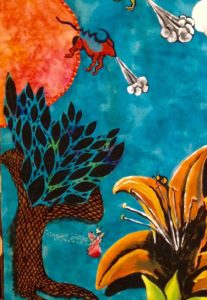
Figure 1Detail of Dana Helms Ekphrasis fiber art
DH: My process so far has been totally amazing! I agreed to be part of the show and was paired with Nicole Metts. Next I received her poem and was immediately inundated with ideas in both the Fiber and animation world. Nicole shared some of her likes (i.e. Colors, and steampunk) and I went from there with emailing a sketch then an in progress image. She has been very encouraging and supportive. I am hoping to collaborate more with her on an animation film short to submit to film festivals and multi-media shows in museums.
AH: Christy Town and I met at Tea2Go (as all Waco artists do) a couple weeks ago. We started by discussing our respective work. Christy told me that she was an abstract artist, which excited me because I have always been moved more by abstract art. After seeing some examples of her art and talking about my poetry, we started talking about reoccurring images in my poetry (phoenixes, stained glass windows). From there, we decided that we would continue with the themes of some of my past poetry about interpersonal violence and play with the images of phoenixes and stained glass as images of renewal. Since then, we have been playing with various ideas in both art and poetry. I have developed a near-final draft of the poem that steals some lines and concepts from old poetry, while also exploring some new ideas from Christy’s inspiration. I am currently in the process of playing with some formatting. As I am accustomed to sharing my poetry typically through spoken word, I am excited to find a way to present this piece visually rather than orally.
JP: How has this project challenged you—pushed you beyond the bounds of your routine creative process?
NM: The flyer has been a challenge. It was difficult to come up with a truly unique perspective; but I love a challenge and am thankful for the experience.
DH: I am usually a face to face kind of person. I like to get a sense of who the writer is and where they come from. So this has completely thrown me outside of my comfort zone. Which is a very good thing for anyone to do frequently! I feel very mentally expanded right now. It’s very riveting!!!
AH: This project has challenged me by allowing me for the first time to acknowledge myself in a significant way as a writer and poet. It has also challenged me in the way that collaboration always does: it is an adventure to see something as dear to me as my writing through the eyes of another artist who I respect.
JP: How has/is this project shaped/shaping you as an artist/writer?
NM: This project has helped me grow and build skills as a writer and has also introduced me to some amazing inspiring people.
JP: What value does this kind of project /exhibit have for artists & for our city?
NM: Waco and the arts community should be truly proud of this project. This partnership between artist and writer will bring its audience a truly unique and memorable experience.
DH: Putting writers and visual artists together will allow for a more inclusive community. To open a dialogue between word smiths and visuals is to grow a collaborative that will do the unimaginable. I would have never thought of this piece or the animation without reading Nicole’s work
AH: I think this exhibit will open the eyes of locals and visitors to the amazing community of artists in the Waco area. Waco is, like any city, often defined by a handful of people and events that don’t capture the entirety of its diversity. I think it is so easy for all of us to see Waco and think of Baylor or Fixer Upper, both of which just scratch the very surface of what Waco is. Waco is a sum of all of its parts, and that includes the artistic expression that it inspires.
JP: What would you like Waco to know about this exhibit and /or arts & community in general?
NM: This type of project truly brings people together with a common bond to bring culture to Waco and is an ingenuous event that should not be missed.
AH: I would like Waco to recognize the beauty that comes from a group of people coming together to bring their respective talents together to make art. In a world full of so much hate and violence, I think collaborations like this, artistic or not, are exactly what community is about. I hope that this exhibit inspires the people of Waco to collaborate with one another. Something truly magical happens when diverse groups of people get together and share their stories, their talents, and their unique perspectives. This exhibit is just one manifestation of that.
JP: Would you do something like this again?
NM: I would absolutely do something like this again and I have enjoyed every moment of it! I also hope Dana Helm and I will be doing other projects together in the future.
DH: I would definitely love to do something like this again!! I’m IN!!! I am bringing some of my husband’s colleagues with me to the show. They can’t stop talking about it with him at work. It’s a great idea!!
AH: Absolutely!
Get Involved:
- First Friday :: August 5, 2016 :: Stroll along Austin Avenue and cast your votes for :
o BEST IN SHOW
o MOST INSPIRING
o WACO/DOWNTOWN SPIRIT
- Ekphrasis Reception & Awards Ceremony :: Saturday August 6, 2016 :: 5:30pm @ Hippodrome outdoor patio :: Live Music, Ekphrastic reading; Awards; and more!
- Waco Poets Society Open Mic :: Thursday July 21 6-8pm at Tea2Go Waco-Baylor featuring singer/songwriter Braden Guess
- Creative Waco Summer Camp Listing
 Jenuine Poetess is an artist, visionary, and community organizer. In 2010, she founded In the Words of Womyn (ITWOW), an international, grass-roots, written and spoken-word arts project with chapters throughout Los Angeles, CA; Waco, TX; and Lebanon. Jenuine is the founder of Waco Poets Society and co-founder of the Central Texas Artist Collective. She writes, organizes, and creates rooted in the fierce conviction that holding intentional space, access, and opportunity for all people to foster their creative health is a matter of justice and is a vital asset to the sustainable thriving of communities. She currently lives and poems in Central Texas where she enjoys finding new ways to disrupt the homeostasis of her city. You can contact her at: jenuinepoetess@gmail.com.
Jenuine Poetess is an artist, visionary, and community organizer. In 2010, she founded In the Words of Womyn (ITWOW), an international, grass-roots, written and spoken-word arts project with chapters throughout Los Angeles, CA; Waco, TX; and Lebanon. Jenuine is the founder of Waco Poets Society and co-founder of the Central Texas Artist Collective. She writes, organizes, and creates rooted in the fierce conviction that holding intentional space, access, and opportunity for all people to foster their creative health is a matter of justice and is a vital asset to the sustainable thriving of communities. She currently lives and poems in Central Texas where she enjoys finding new ways to disrupt the homeostasis of her city. You can contact her at: jenuinepoetess@gmail.com.
The Act Locally Waco blog publishes posts with a connection to these aspirations for Waco. If you are interested in writing for the Act Locally Waco Blog, please email ashleyt@actlocallywaco.org for more information.
by Alexis Christensen
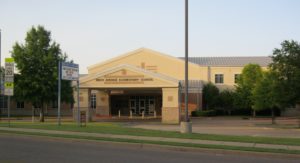 I have the privilege to work with three elementary schools within Waco ISD. They each have their unique strengths and challenges. Today though, I’m highlighting one campus in particular, West Avenue Elementary, located in the heart of North Waco on 15th Street.
I have the privilege to work with three elementary schools within Waco ISD. They each have their unique strengths and challenges. Today though, I’m highlighting one campus in particular, West Avenue Elementary, located in the heart of North Waco on 15th Street.
Waco Community Development began partnering with West Avenue in 2007. We started simply by asking people questions about their dreams and visions for their neighborhood and actively listened to their responses. Out of those conversations, our Family Engagement Program began. Today, when I ask people to describe what North Waco and West Avenue were like back then, I get responses like, “tore up” and “lots of prostitution and drug dealers” and “couldn’t see the good because of the bad.” When you looked at the neighborhood by the numbers during that time, it’s easy to see why people described their neighborhood like that. In 2009, there were 22 vacant retail/business spaces, 190 vacant residential lots, a poverty rate of 43%, and only 35% of residents were homeowners (NRS, 2009 & Census Bureau, 2000).
Yet, since the 2007-2008 school year, West Avenue has been rated by the Texas Education Agency (TEA) as Recognized, Academically Acceptable and Met Standard. And more recently, an assessment conducted by Waco ISD monitoring children’s Pre-Kindergarten readiness showed that West Avenue students were among the most ready to learn among their peers (CLI Engage Assessment). I believe it is worthwhile to take a deeper look at a few factors that helped lay the foundation for West Avenue’s success.
- In its fourteen year history, West Avenue has had 2 principals.
Andreia Foster was the first principal when the campus opened in 2002. Her “open door policy” allowed Waco Community Development and other organizations to work with students and families. Ms. Foster remained principal until 2014. Her twelve year tenure at a single campus created stability not only for families, but for the teaching staff as well.
Sheree Goodman, who taught at West Avenue for 10 years, agrees: “Low turnover [among staff] is connected to academic success, but we were more than co-workers, we became a family… a network was established. The staff was family-oriented and all stakeholders were included in every process. We always tried to do what was best for the kids; we truly believed in the students,” she said.
This legacy lives on through West Avenue’s “new” principal, Joseph Alexander, who just finished his second school year. Mr. Alexander’s motto is “No child is left behind at West Avenue.” This is demonstrated through his vigor and big dreams for his campus. He stated, “I want West Avenue to be a Blue Ribbon campus, a model for the State of Texas. Our students are the best in the state. We will do what other people say we can’t do with children from poverty. We believe that children can learn and will learn if given opportunity to be successful.”
These beliefs and core values both inspire and motivate students and teachers to be the best.
- Residents and community organizations are committed for the long haul.
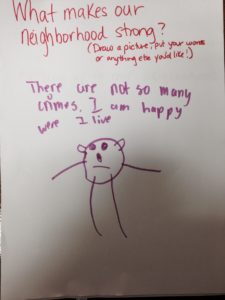 North Waco residents are not shy about their love for their neighborhood. An abundance of committed and trusted organizations and people live, work, worship and play in the neighborhood on a consistent basis. I would be remiss to try and name them all here; however, I’ve observed two main characteristics which distinguish these groups from others: their sustained commitment to learning from varying experiences and perspectives, and their deep held belief that trust is not a right due to them because of good intentions, but trust is a privilege to be earned. These practices are not cultivated overnight but develop with time.
North Waco residents are not shy about their love for their neighborhood. An abundance of committed and trusted organizations and people live, work, worship and play in the neighborhood on a consistent basis. I would be remiss to try and name them all here; however, I’ve observed two main characteristics which distinguish these groups from others: their sustained commitment to learning from varying experiences and perspectives, and their deep held belief that trust is not a right due to them because of good intentions, but trust is a privilege to be earned. These practices are not cultivated overnight but develop with time.
- Homeownership is growing in North Waco.
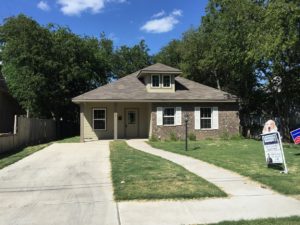 Homeownership is a major factor in creating neighborhood stability. A growing body of research points out that homeownership has the potential to positively impact educational goals.
Homeownership is a major factor in creating neighborhood stability. A growing body of research points out that homeownership has the potential to positively impact educational goals.
“Affordable and sustainable forms of homeownership can also help families achieve long-term stability. Research on the connection between homeownership and children’s education has found that homeowners tend to move less frequently than renters and that this may account for part of the difference in educational outcomes between children of homeowners and children of renters” (Holupka, C. Scott and Sandra J. Newman. 2010).
Waco Community Development was created with the lofty and ever galvanizing mission to inspire and cultivate healthy neighborhoods. In 2001, we joined the ranks of housing entities like Waco Habitat for Humanity and NeighborWorks who strived to create a culture of homeownership. For us, working within a geographically defined area proved to be a successful model. Today, the homeownership rate in Census Tract 12 (North Waco area) is 42%, an increase of approximately 7 percentage points from the 2009 sample data (Census 2014). We have seen vested homeowners become PTA officers, volunteers and mentors for students at West Avenue. One such Waco Community Development homeowner not only became the PTA Treasurer, but her son was valedictorian of his 5th grade class last May.
The complexity of factors influencing neighborhood development can make it difficult to understand what particular cause created a particular effect. There are schools of thought that believe this to be a negative thing, but I see a positive in the midst of the murkiness: It allows people and organizations to be interdependent when tackling difficult issues within our communities. It doesn’t excuse us from critically evaluating our work or from pursuing excellence; it simply means we have the opportunity to reach out to partners all around us to create even greater positive impact.
West Avenue has learned to lean on and be leaned upon and I think that’s a piece of why it’s experiencing such great success. Former teacher Ms. Goodman said it best, “The school is still a pillar. People know they can go there for anything they need and the partners have become resources for both the community and the school.”
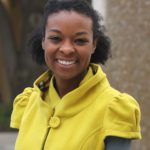 Alexis Christensen is a Community Organizer at Waco Community Development Corporation (Waco CDC) where she focuses on community building, leadership development and building collaborations.
Alexis Christensen is a Community Organizer at Waco Community Development Corporation (Waco CDC) where she focuses on community building, leadership development and building collaborations.
The Act Locally Waco blog publishes posts with a connection to these aspirations for Waco. If you are interested in writing for the Act Locally Waco Blog, please email ashleyt@actlocallywaco.org for more information.
(Note: This post is part of a series called “Entrepreneurs of Waco.” The series is collaboration between the McLennan Small Business Development Center (SBDC), the Professional Writing program at Baylor University, and Act Locally Waco. The McLennan Small Business Development Center offers technical assistance, business mentoring, training, and resources for all stages of small business. For more information, visit their website: www.mccsbdc.com. To see all the posts in this series, click here: Entrepreneurs of Waco. – ABT)
by Chae Canale
For Courtney Rogers, the owner of Co-Town Crepes, venturing to Waco from Dallas was supposed to be temporary. Little did she know that it would become so much more than just a short pit stop, it would become a life changing decision.
After attending a discipleship training school at Antioch Church, Courtney enrolled at MCC and picked up a part-time job at the local restaurant, Sironia. There, she met Juanita, one of the chefs who encouraged Courtney’s passion for flavorful food. Even though Courtney was on the wait staff, she would slip into the kitchen to pick Juanita’s brain about food combinations. A year later, Juanita and Courtney ended up working together at The Epicurean, a vegetarian and vegan restaurant.
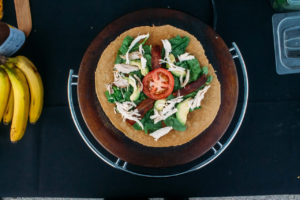 This experience resurrected an interest in nutrition that Courtney’s mother planted when Courtney was just a child. This history would later impact the menu choices for her business. While owning her own business was not part of her Waco plan, the aptitude for entrepreneurship stemmed from her childhood as well. Her father Cyrus Cozart said, “We taught the kids that money is earned, so the kids started selling bread at a very young age to earn their own money.” Courtney and her brother and sisters would sell bread to church members and the neighbors. This helped them make enough money to pay for their clothes and other things they wanted. So it is no surprise that her parents’ values set the guidelines for her future. Through these values and the passion for the Waco community, Courtney wanted to use her love of food to touch those around her.
This experience resurrected an interest in nutrition that Courtney’s mother planted when Courtney was just a child. This history would later impact the menu choices for her business. While owning her own business was not part of her Waco plan, the aptitude for entrepreneurship stemmed from her childhood as well. Her father Cyrus Cozart said, “We taught the kids that money is earned, so the kids started selling bread at a very young age to earn their own money.” Courtney and her brother and sisters would sell bread to church members and the neighbors. This helped them make enough money to pay for their clothes and other things they wanted. So it is no surprise that her parents’ values set the guidelines for her future. Through these values and the passion for the Waco community, Courtney wanted to use her love of food to touch those around her.
 “I have always loved crepes. Everywhere I would travel, I would get a crepe. So I got a recipe from a friend and I just started tweaking it and playing around with different ingredient combinations.” Courtney would spend hours in the kitchen experimenting. A friend mentioned that a Downtown Farmers’ Market was starting so Courtney started thinking about how she could be a part. “My husband and I actually started at the Farmers’ Market just out of a love for Waco back in 2011. We wanted to make it a fun place to live and really give people a fun food experience.” Courtney also wanted people to watch the crepes being made. “I see crepes as a very nostalgic food, tied to sweet memories.” Courtney’s mother believes her daughter’s passion for community outreach came from her youth pastors in Dallas. “They had a huge impact on Courtney’s life. They always had someone living with them, and they modeled the idea of community living—living for those around them,” explains Diane Cozart.
“I have always loved crepes. Everywhere I would travel, I would get a crepe. So I got a recipe from a friend and I just started tweaking it and playing around with different ingredient combinations.” Courtney would spend hours in the kitchen experimenting. A friend mentioned that a Downtown Farmers’ Market was starting so Courtney started thinking about how she could be a part. “My husband and I actually started at the Farmers’ Market just out of a love for Waco back in 2011. We wanted to make it a fun place to live and really give people a fun food experience.” Courtney also wanted people to watch the crepes being made. “I see crepes as a very nostalgic food, tied to sweet memories.” Courtney’s mother believes her daughter’s passion for community outreach came from her youth pastors in Dallas. “They had a huge impact on Courtney’s life. They always had someone living with them, and they modeled the idea of community living—living for those around them,” explains Diane Cozart.
The Farmers’ Market also served as a learning experience for Courtney and her husband Kyle. It taught them how to run a business and how to manage different finances. During this period, the business grew by word-of-mouth. Periodically, they would evaluate the future of Co-Town Crepes. The name “Co-Town” was inspired by the kids in the youth group of Antioch, who jokingly referred to “wa-CO” as Co-Town.
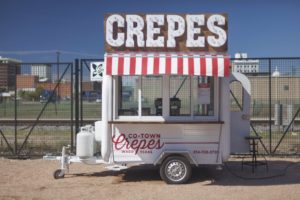 Courtney and Kyle loved the business, but they weren’t sure about expanding; the timing didn’t seem right. That’s until the beginning of 2015 when Courtney felt God directing her to expand her business and to utilize her passion for the community through her love of food even more. After much thought, Courtney took this leap of faith. She gave up her full time teaching job and purchased her first food truck. The food trailer, purchased off of Craig’s List, was made in China, it didn’t have standard electrical outlets, and all the writing was in Mandarin. She admits that trying to register it was an adventure. “And I had a lot of help converting it into what it is today,” she says.
Courtney and Kyle loved the business, but they weren’t sure about expanding; the timing didn’t seem right. That’s until the beginning of 2015 when Courtney felt God directing her to expand her business and to utilize her passion for the community through her love of food even more. After much thought, Courtney took this leap of faith. She gave up her full time teaching job and purchased her first food truck. The food trailer, purchased off of Craig’s List, was made in China, it didn’t have standard electrical outlets, and all the writing was in Mandarin. She admits that trying to register it was an adventure. “And I had a lot of help converting it into what it is today,” she says.
Between catering and the two locations, a site at the Magnolia Silos that operates six days a week and the popular booth at the Waco Downtown Farmers’ Market on the weekends, the expansion of “Co-Town” has surpassed each goal Courtney has set forth. Moreover, she has used her business to offer jobs to some people who just needed a second chance. In other words, Courtney isn’t content running a business; she wants her business to change lives. While it is about crepes, it’s so much more than crepes. Through her passion and love for the city of Waco, flavorful food, and community living, Courtney pours grace into the city one crepe at a time.
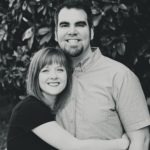 The entrepreneur…after graduating from Tarleton State University through the University Center at MCC, Courtney Rogers taught Family and Consumer Sciences at Axtell High School. In the summer of 2015, she began working full time, expanding Co-Town Crepes. She met her husband Kyle after moving to Waco in 2007. Kyle is a graphic designer, Co-Town’s longest standing employee and the kindest man you’ve ever met. She is passionate about investing in people and being a part of Jesus changing their lives.
The entrepreneur…after graduating from Tarleton State University through the University Center at MCC, Courtney Rogers taught Family and Consumer Sciences at Axtell High School. In the summer of 2015, she began working full time, expanding Co-Town Crepes. She met her husband Kyle after moving to Waco in 2007. Kyle is a graphic designer, Co-Town’s longest standing employee and the kindest man you’ve ever met. She is passionate about investing in people and being a part of Jesus changing their lives.
Co-Town Crepes’ Locations:
Food truck park @ Magnolia Silos (Monday-Saturday)
Waco Downtown Farmers Market (Saturdays from 9am-1pm)
Contact Courtney at cotowncrepes@gmail.com or get more information and pictures of this yummyness at www.cotowncrepes.com
 The writer…Chae Canale is a senior at Baylor University currently pursuing a degree in Child and Family Studies. At the age of 32, she decided to follow her dreams and go back to school in order to pursue her passion. Chae lives in Ft Worth and enjoys spending time with her 12-year- old daughter when she is not attending school. Her purpose in life is to inspire those around her to reach for their dreams!
The writer…Chae Canale is a senior at Baylor University currently pursuing a degree in Child and Family Studies. At the age of 32, she decided to follow her dreams and go back to school in order to pursue her passion. Chae lives in Ft Worth and enjoys spending time with her 12-year- old daughter when she is not attending school. Her purpose in life is to inspire those around her to reach for their dreams!
The Act Locally Waco blog publishes posts with a connection to these aspirations for Waco. If you are interested in writing for the Act Locally Waco Blog, please email ashleyt@actlocallywaco.org for more information.
by Ashley Bean Thornton
“I tried to see a friendly face somewhere in the mob – somebody who maybe would help. I looked into the face of an old woman, but when I looked at her again, she spat on me.”
— Elizabeth Eckford, one of the Little Rock Nine
In September of 1957, nine African American high school students enrolled in formerly all-white Central High School in Little Rock, Arkansas. Arkansas Governor, Orval Faubus, welcomed the students, saying: “We have done some terrible things in this country – we enslaved people, we oppressed people, we killed people – based on nothing more than skin color. We can never erase these things, and we must never forget them, but we can and do repent of them. We are humbled, today, to be on the front lines of righting a great injustice. We look forward to beginning a process of racial integration that will benefit all our citizens, Black and White! For too long our schools have been segregated. For too long the Black students in our state have had to make do with inferior facilities and materials. For too long our communities have missed out on the full benefit of nurturing and feeding and growing and celebrating the minds and hearts and spirits of these beautiful young people. I am here today to throw open these doors in welcome, to usher in these nine exceptional students, and to usher in along with them a new era of freedom, justice and prosperity for the great state of Arkansas and, indeed for our whole nation.”
Oh, White America! How different our world might be if this were the story we could tell!
It is not.
Instead of giving these nine young people the heroes’ welcome they deserved, we met them with angry mobs and screaming. Instead of welcoming them, we threatened them and spat on them. We closed down the school district for a year rather than integrate it. When that didn’t work, we abandoned it. We ran away.
I’m not just talking about Little Rock any more, I’m talking about cities across the South, throughout the country…We moved out of the city. We created White suburbs and we put in place deed restrictions and loan restrictions at the bank so that the Black children could not follow us.
Now, almost sixty years later, we no longer have to scream and spit. Now instead of saying we moved out of town to “get away from the Blacks” we can say we moved out because “we want our kids to go to a good school.” Who can blame us for that? Never mind that our schools are “good” because rather than lean toward fairness and equality, rather than work for schools that could have benefited all children, we chose to gather up our resources (earned, certainly, but earned on a playing field that was anything but fair) and move to a place where Black children could not follow.
Now, a generation or so into our re-segregated lives, we feel perfectly justified in saying, “I’m not prejudiced or anything, but why should my hard earned tax dollars go to support a school system where my kids don’t even go?”
And so the struggling school districts keep struggling.
And so, the richer folks, who just happen to generally also be the Whiter folks, get better schools. And, the people who get better educations, as we know, get better jobs…and so on, and so on…
And what about the ones who were left behind? The ones without the good schools…the ones who are getting worse and worse educations, and worse and worse jobs? The ones who just happen to generally also be Blacker? It’s actually pretty easy not to see them.
And then someone…a young black man…gets killed. And another. And another. And another. And then five police officers are killed. And then we are wondering, what’s happening? No place feels safe anymore. What’s going on?
What’s going on, White America, is that we did a bad thing, many bad things. We enslaved people, we oppressed people, we killed people — based on nothing more than skin color. We treated our fellow human beings as less than human. We believed ourselves to be better than them. And when the time came to repent, to turn around, to acknowledge our wrongs and to sincerely devote ourselves to doing right, we did not. We still have not.
Instead of throwing the doors open wide, we called in soldiers to keep the door shut. When that didn’t work, instead of staying and building schools and communities where we could all live and thrive together, we grabbed our stuff and ran away. We figured out a way to build a society that has allowed us to continue to accrue the benefits of being White without having to admit to the unpleasantness of racism. At every step we have done the least we could do, and fought like Hell not to do that.
And now we White people realize something that Black people have known for a long time. The situation is dangerous. We are worried and afraid. We made this situation, White people, and it is going to be hard to fix it. And we will never fix it unless we take responsibility for it. If guilt is what it takes for us to take responsibility, then we need to admit our guilt. If self-interest is what it takes to take responsibility, then we need to realize that we will all be better off when our Black Brothers and Sisters are better off. If religious conviction is what it takes for us to take responsibility, then we need to pray to God to give us a hunger for righteousness. We need to take the responsibility. We need to shine a light on the disparities that still exist between the races, and we need to get to work doing our part to fix them.
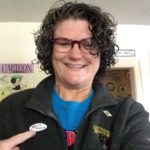 This Act Locally Waco blog post is by Ashley Bean Thornton, she works at Baylor, helps out with Act locally Waco, and facilitates the Waco Foundational Employment Network which is a part of Prosper Waco. She likes to walk and doesn’t mind at all if you honk and wave when you see her.
This Act Locally Waco blog post is by Ashley Bean Thornton, she works at Baylor, helps out with Act locally Waco, and facilitates the Waco Foundational Employment Network which is a part of Prosper Waco. She likes to walk and doesn’t mind at all if you honk and wave when you see her.
The Act Locally Waco blog publishes posts with a connection to these aspirations for Waco. If you are interested in writing for the Act Locally Waco Blog, please email ashleyt@actlocallywaco.org for more information.
by Angela Ceccato
1) While mowing a friend’s lawn, I noticed that there were some small overhanging limbs. There was a yard crew next door. I boldly approached two gentlemen of color and asked to borrow their loppers. They agreed and apologized that the loppers were dull. Would either of them have felt comfortable approaching me, if the situation were reversed?
2) I made exasperated (NOT profane) gestures at an inconsiderate driver (a man of color), while driving in a predominantly “black” part of town. Would he have done that in my neighborhood regardless of how my driving affected him?
3) I had the joy of reading to children at Oscar DuConge Park without their parents’ explicit permission. Could a group of black women show up with books at Hewitt Park and read to children without parental consent?
4) I MAY or MAY NOT have “run” an orange light on Hewitt Drive. I lost count of the number of “Driving While Black” pullovers I’ve seen on Hewitt Drive.
If you are mentally making excuses to discount race in these instances, you are privileged as well. It is OUR responsibility to address the racial disparity that exists in our community. I never had to teach my boys how to behave, when approached by police. That is a luxury many in our community do not share. With privilege comes responsibility.
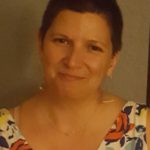 Angela Ceccato was moved to Waco, when she was twelve and chose to raise three beautiful brilliant children in the Greater Waco area. She’s a social worker for Waco ISD and is passionate about all children growing into their full potential. She and her spouse are adjusting to the empty nest and enjoy exploring Downtown Waco, hiking, reading, and occasional Netflix binges.
Angela Ceccato was moved to Waco, when she was twelve and chose to raise three beautiful brilliant children in the Greater Waco area. She’s a social worker for Waco ISD and is passionate about all children growing into their full potential. She and her spouse are adjusting to the empty nest and enjoy exploring Downtown Waco, hiking, reading, and occasional Netflix binges.
